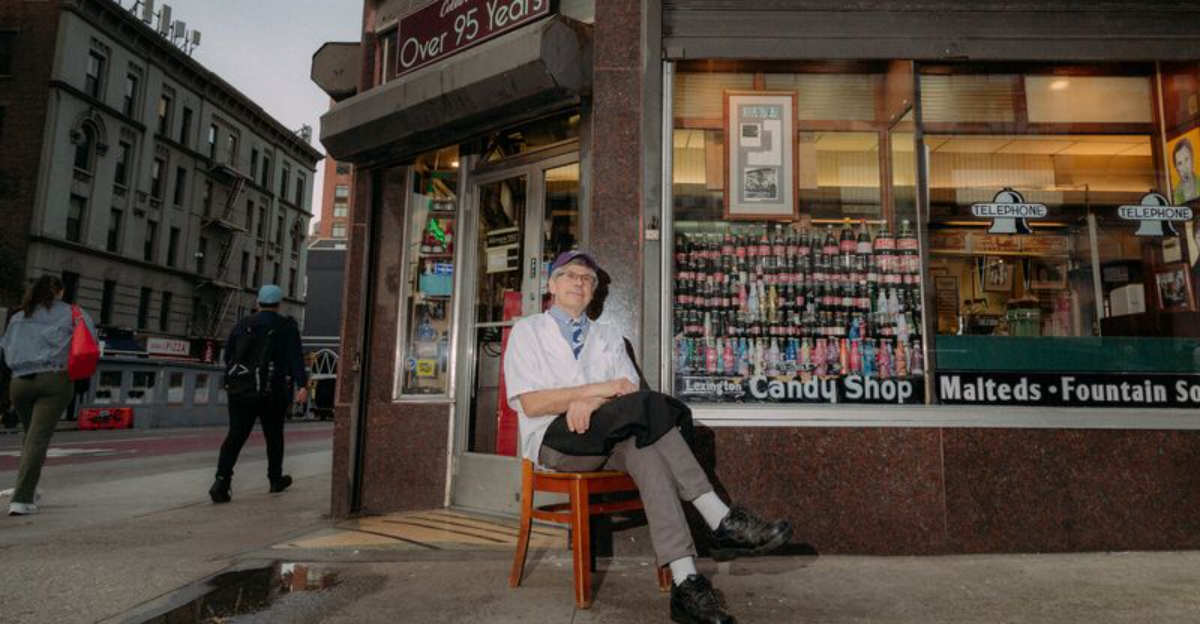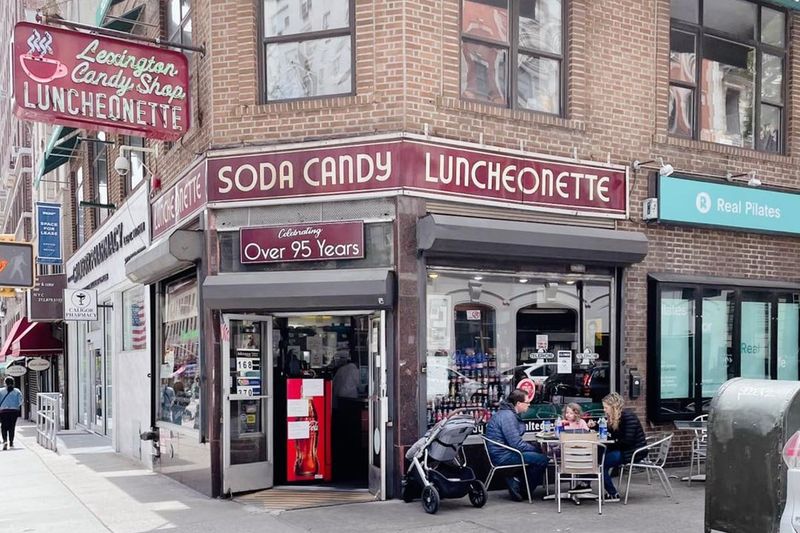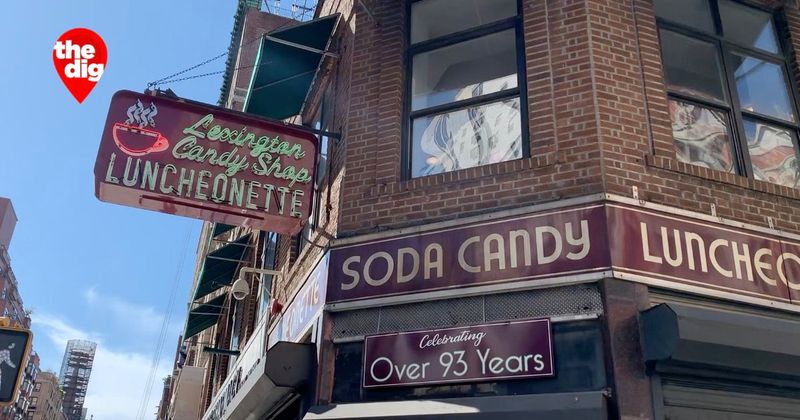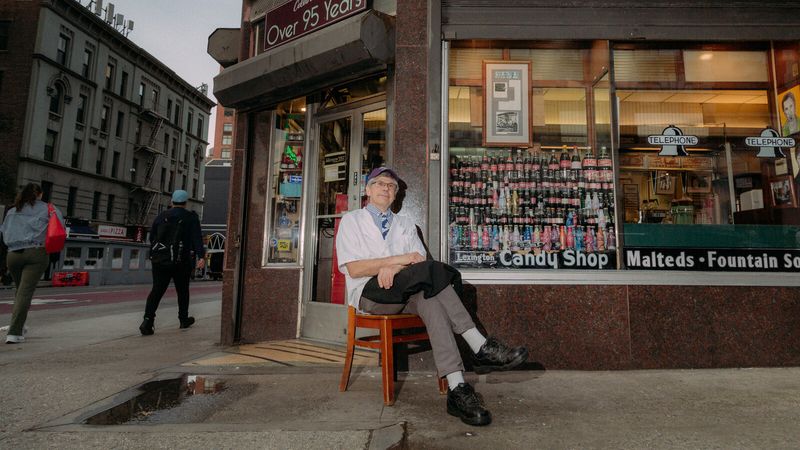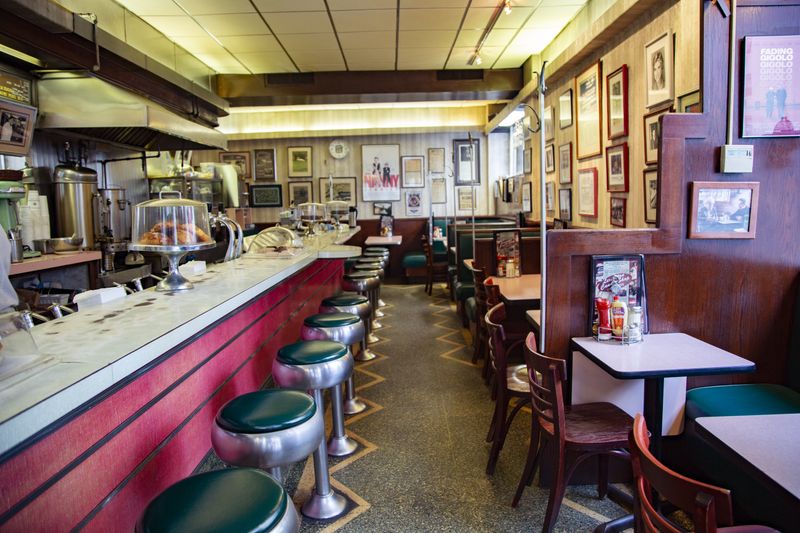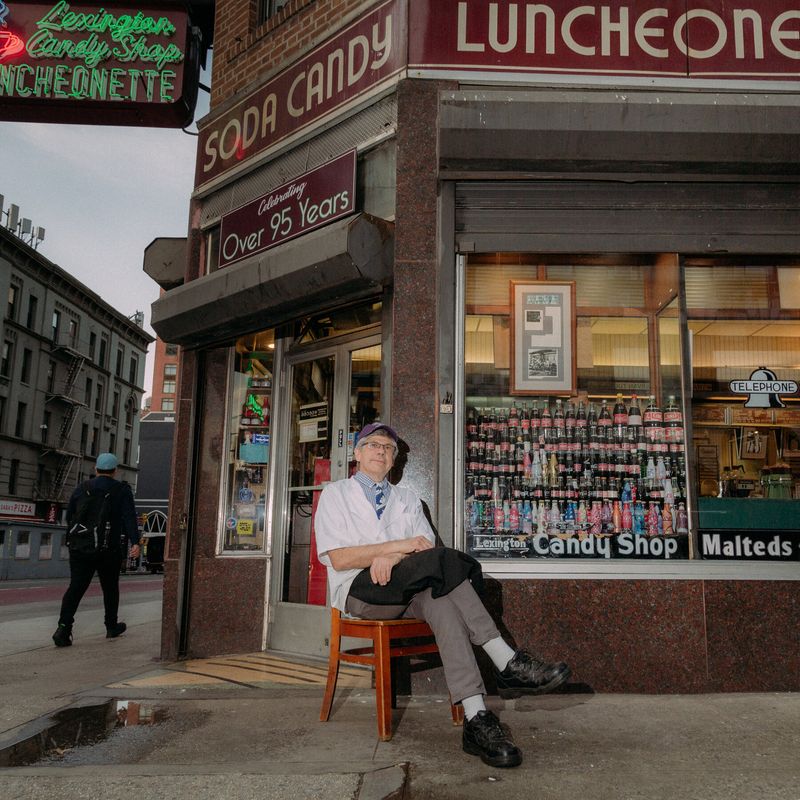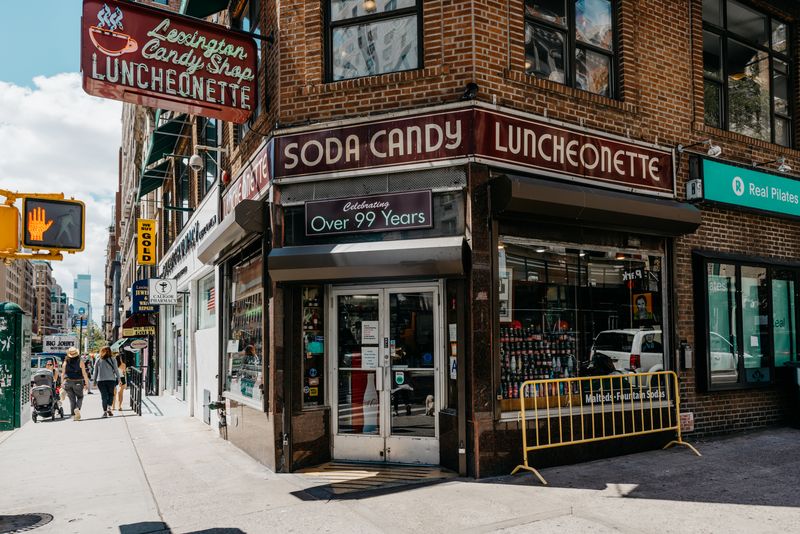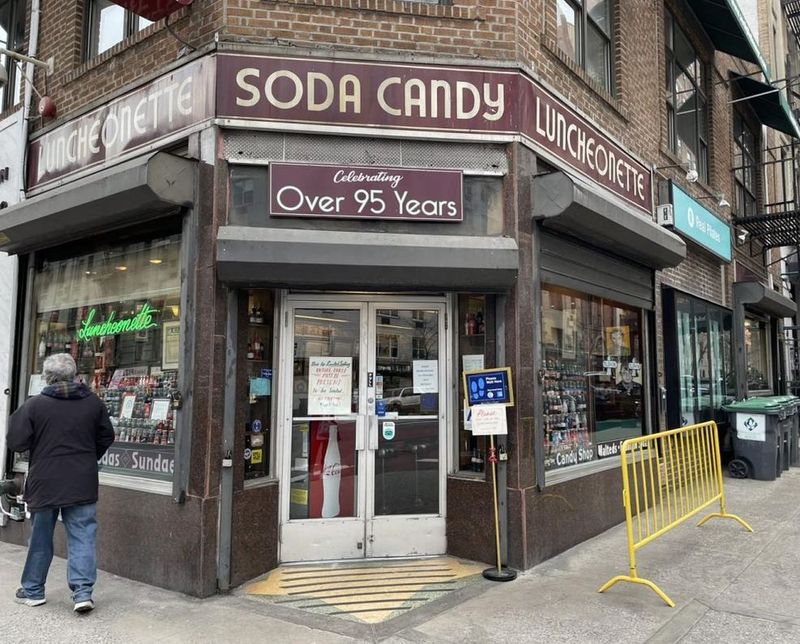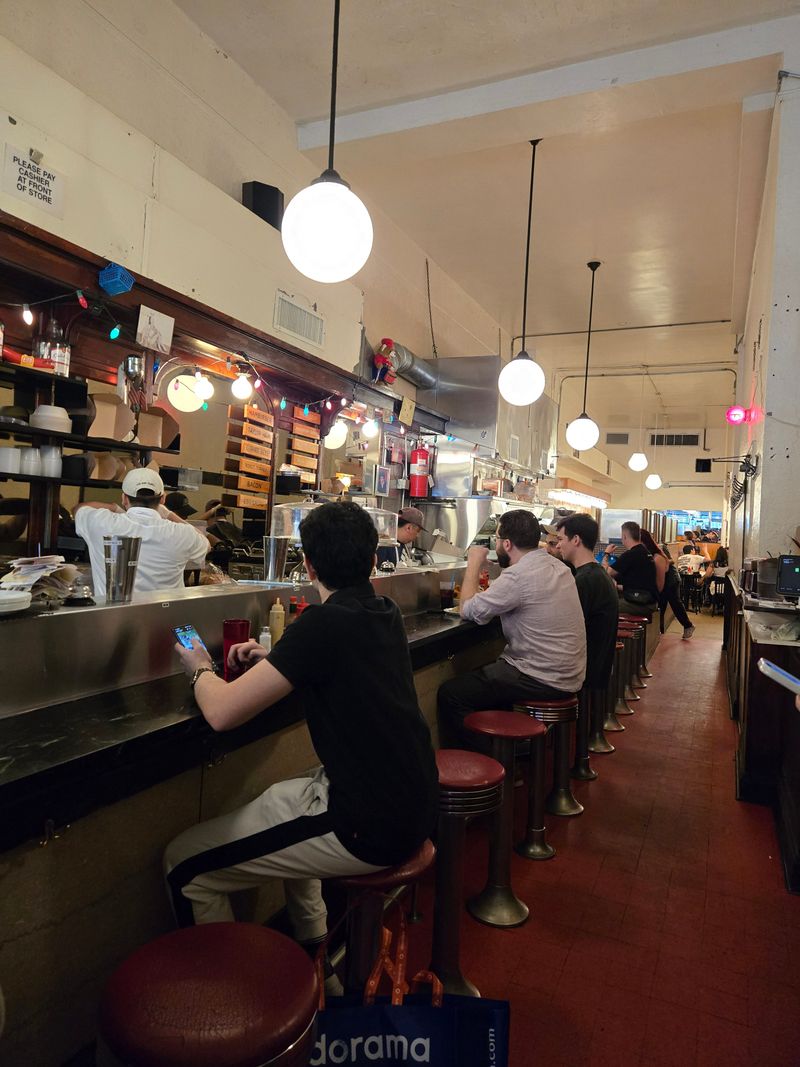Tucked away on the bustling Upper East Side stands a rare treasure: Lexington Candy Shop, a family-run luncheonette that has served New Yorkers since 1925. With its vintage soda fountain, spinning counter stools, and classic egg creams, this timeless spot offers a delicious glimpse into the city’s past. Step inside and discover why this beloved institution continues to charm locals and visitors nearly a century later.
A Time Capsule at 1226 Lexington
At 1226 Lexington Avenue sits a venerable landmark that opened its doors in 1925. The building retains much of its mid-century character, complete with booth seating, spinning stools, formica counters, and vintage soda-fountain equipment largely unchanged since 1948.
Walking through the entrance feels like stepping into a snapshot of old New York. Lunch-counter classics like egg creams, malt shakes, and pancakes compete for attention with the sense of history surrounding you.
The fact that this lunch spot has remained family-run for generations adds immeasurably to its charm and continuity. It stands as an enduring relic in a city of constant change, preserving traditions that most neighborhoods have long forgotten.
Milkshakes, Coca-Cola the Old Way & Legendary Fare
Classic American luncheonette fare defines the menu at this beloved establishment. Towering stacks of pancakes, French toast, tuna melts, BLTs, and burgers channel a mid-century diner vibe that transports patrons to simpler times.
Perhaps most nostalgic is the old-school soda fountain experience still available today. Patrons may order a Coca-Cola float mixed by hand with syrup and soda, just as it was prepared in the early 20th century.
Original kitchen equipment, vintage coffee urns, and menus that echo earlier eras underscore the commitment to tradition. For food lovers and history buffs alike, the shop offers more than a meal—it offers a taste of continuity, resisting the fast-food evolution happening all around it.
Family Legacy & Surviving the Times
In an era when luncheonettes have mostly vanished, one establishment has thrived for nearly a century. Since Greek-American immigrant Soterios Philis founded the business in 1925, it has remained in the family through three generations.
Today, his grandson John Philis operates the shop alongside partner Bob Karcher. The continuity of ownership contributes significantly to its consistent feel and authentic atmosphere.
Amid changing breakfast trends, shifting real-estate pressures, and evolving consumer habits, this three-generation business has maintained its distinct identity. It remains one of New York City’s few genuine luncheonettes and is often cited as the city’s oldest family-owned one, a remarkable achievement in Manhattan’s competitive landscape.
Why It’s a Must-Visit & What to Know
Visiting this establishment is like entering a living museum of New York’s diner history. Situated near Museum Mile, just three blocks from the Metropolitan Museum of Art at the corner of 83rd Street and Lexington Avenue, it’s easy to include on a cultural day out.
Plan ahead: hours start early at 7 a.m. on weekdays, and the space is modest, so peak times may mean a short wait. Patience is rewarded with an authentic experience you won’t find elsewhere.
For the full experience, belly up at the counter, order a classic item or milkshake, and take in the walls lined with photos and memorabilia. Whether you’re a local or visitor, expect both sustenance and nostalgia in equal measure.
The Authentic Soda Fountain Experience
Long before chain coffee shops dominated every corner, soda fountains were the social hubs of American neighborhoods. This rare surviving fountain still operates with original equipment, dispensing carbonated beverages mixed fresh with flavored syrups.
Skilled counter staff—often called “soda jerks” in the old days—prepare each drink with practiced precision. The fizzy hiss of carbonation and clink of metal scoops against glass create a soundtrack that hasn’t changed in decades.
Egg creams, despite their name, contain neither eggs nor cream but deliver a frothy, sweet chocolate experience that’s quintessentially New York. Lime rickeys, cherry phosphates, and malted milkshakes round out the fountain menu, each prepared with techniques passed down through generations of counter workers.
Breakfast Done the Traditional Way
Mornings bring a steady stream of regulars who know exactly what they want. Eggs cooked to order arrive alongside crispy bacon, golden hash browns, and toast buttered while still hot from the griddle.
The pancakes deserve special mention—fluffy, generously sized, and served in stacks that challenge even hearty appetites. French toast gets the same careful attention, with thick slices of bread soaked in custard and griddled until golden.
Unlike modern brunch spots with their elaborate presentations and fusion twists, this place focuses on execution rather than innovation. Simple ingredients, proper technique, and consistent quality have kept customers coming back decade after decade. Breakfast here isn’t trendy—it’s timeless, which is precisely the point.
A Neighborhood Anchor Through Generations
For nearly a century, this establishment has witnessed the Upper East Side transform around it. Regulars who visited as children now bring their own grandchildren, creating multi-generational memories at the same counter stools.
The walls display decades of neighborhood history through faded photographs and newspaper clippings. Celebrity visitors have stopped by over the years, but the shop treats everyone with the same friendly service.
Staff members often work here for years, learning customers’ usual orders and remembering their names. This personal connection has become increasingly rare in modern New York, where turnover is high and anonymity is common. The sense of community fostered here represents something precious: a place where you’re not just a customer, but a familiar face.
Preserving a Vanishing New York
Across Manhattan, vintage luncheonettes have disappeared at an alarming rate, replaced by banks, chain stores, and luxury condos. What makes this survivor special isn’t just its age, but its refusal to modernize away its character.
The original fixtures aren’t museum pieces—they’re working equipment still serving customers daily. The formica counters show wear from countless elbows, the stools spin with the same squeaky resistance they always have, and the cash register rings with satisfying mechanical clicks.
Preservation here isn’t about freezing time artificially, but about maintaining a business model and aesthetic that still works. For anyone interested in authentic New York history, this luncheonette offers something no museum can: a chance to actually experience the past, one milkshake at a time.
